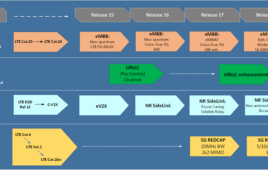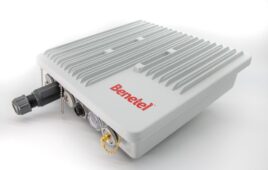The CBRS Alliance and the Alliance for Telecommunications Industry Solutions (ATIS) are partnering to advance commercialization of the 3.5 GHz Citizens Broadband Radio Service (CBRS) band.
The collaborative partnership aims to tackle technical challenges and address business opportunities, with a focus on network identity management initiatives including those related to International Mobile Subscriber Identity (IMSI) and Home Network Identity (HNI). The pair’s scope also includes legal and regulatory compliance work.
“The CBRS Alliance values working with ATIS as one of the most respected industry associations in the telecommunications sector,” said Alan Ewing, executive director of the CBRS Alliance, in a statement. “We’re looking forward to tackling technical challenges that may be associated with delivering commercial service in the 3.5 GHz band and to maximizing cooperation between our organizations.”
In October, the FCC finalized rules for Priority Access Licenses in the band, which will cover county-size license areas and have renewable 10-year terms. A diverse pool of parties have shown interest in the CBRS band, including cable operators like Charter, Comcast, and Altice USA, while numerous players have been working to toward commercialization.
Earlier in October a suite of vendors snagged FCC certification for CBRS equipment, including Ericsson, Nokia, Sercomm, and Arris’ Ruckus Networks.
“This major milestone in the commercialization of the CBRS band represents the first of what we believe will be many more certifications announced over the next few months as the industry moves towards Initial Commercial Deployment,” Lee Pucker, CEO of the Wireless Innovation Forum, said at the time.
In September, CBRS Alliance touted its first OnGo interoperability test event as a major success, achieving 98 percent completion rate with no recorded failures.
The same month Federated Wireless submitted a proposal to the FCC for Initial Commercial Deployments on the CBRS band with 15 industry customers that included nearly 16,000 deployment sites across 47 states and Washington, D.C.
As part of the agreement between CBRS Alliance and ATIS, the groups will team on HNI initiatives, including a strategy created by ATIS’ IMSI’s Oversight Council to allocate blocks of ISMIs for users within the 3.5 GHz band.
Typically an HNI identities a mobile subscriber’s home network and can be assigned to an MNO with international roaming capabilities. However, the CBRS band is not solely for exclusive use and some users won’t directly hold FCC spectrum licenses. A Shared HNI is used to identify CBRS operations within the 3.5 GHz band, which conserves HNI resources, according to the organizations.
The CBRS Alliance Technical Working Group and ATIS hosted an educational webinar in November, explaining HNIs and the benefits of a Shared HNI.
“Earlier this year, ATIS and the CBRS Alliance achieved a key milestone in enabling use of CBRS spectrum to improve mobile connectivity and make it more widely available,” said Susan Miller, president and CEO of ATIS. “This new agreement affirms that we will continue our collaboration with the CBRS Alliance, which has been effective in creating infrastructure to utilize the 3.5 GHz CBRS band for LTE services, while also advancing IoT applications.”




